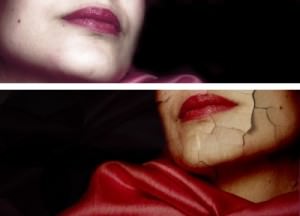 They say that a picture is worth a thousand words. But what about two pictures combined into one? When we think about a photograph, we often think about a single image. The idea seems to be to use one image to convey a subject, idea, or emotion. But we are not limited to a single photo. We can combine multiple images into one to further add to our subject or idea or emotion, and while adding too many photographs to an image may be distracting, diptychs can create quite a powerful message. Diptychs are simply images that contain two separate pictures adjacent to each other. Thinking creatively, you can create some really unique imagery with this technique.
They say that a picture is worth a thousand words. But what about two pictures combined into one? When we think about a photograph, we often think about a single image. The idea seems to be to use one image to convey a subject, idea, or emotion. But we are not limited to a single photo. We can combine multiple images into one to further add to our subject or idea or emotion, and while adding too many photographs to an image may be distracting, diptychs can create quite a powerful message. Diptychs are simply images that contain two separate pictures adjacent to each other. Thinking creatively, you can create some really unique imagery with this technique.
Near + Far
Some of my favorite diptychs have used this format. You shoot a wide scene, then a close up of something. For instance, a beach and a pair of sandals, a forest and a pinecone, a full length body shot and a tattoo. There's something powerful about this pairing that you can't get from a single image. It further paints the scene by adding an extra bit of imagery that you don't get from the wide shot. When doing this, don't limit yourself to photographing something up close that was in the wide shot. Think outside the box. What could compliment the original scene?
Recommended Cameras:
Nikon D500 | Nikon D3300 | Canon EOS Rebel T5 | Sony A7RII | Canon 7D Mark II
Him + Her
Again, this is normally done in a single photograph, but think of what you could do with two photos. A couple could be split up in the image by different locations, different poses, different expressions, etc. Putting a line between two people can exaggerate their differences or their similarities depending on how the shot is taken. This can be done with a variety of people: sisters, brothers, couples, parents, partners, friends, pets, the list goes on and on.
Before + After
This is perhaps the most common form of diptychs, but is mainly used in commercials for things like weight loss or male hair regrowth. There are so many other (more interesting) ways this can be used though. Think about buildings, friends, family, your school, your car. How have these things changed in the last ten years? How will they change in the next ten years? Before and after pictures can add history and depth to a scene that could otherwise be just another building or person. So snap some photos now, or go digging for old photos and see how things have/will change.
Through the Seasons
This is a bit like before and after only on a more frequent scale. Photographing subjects throughout the seasons can add some character to an image. This works particularly well if you live in a place with four distinct seasons. Imagine your grandpa's old truck next to the barn in the winter covered in snow, then in spring with flowers growing through the missing engine parts, glowing in a summer sunset, and hiding behind a blanket of leaves in the autumn. Photographing a subject multiple times a year adds the depth of time to your image, which can be a particularly powerful theme. Of course, this may mean adding more that two pictures together, but a series of similar shots with different settings could make for an interesting photograph on the wall.
Also Read: 23 THINGS YOU MUST KNOW TO BE SUCCESSFUL IN PHOTOGRAPHY
Recommended Reading:
- 2013 Photographer's Market: The Most Trusted Guide to Selling Your Photography
- Best Business Practices for Photographers
- The Fast Track Photographer Business Plan: Build a Successful Photography Venture from the Ground Up
- Group Portrait Photography Handbook
- The Best of Family Portrait Photography: Professional Techniques and Images
- 500 Poses for Photographing Group Portraits
- Selling Your Photography: How to Make Money in New and Traditional Markets
- Starting Your Career as a Freelance Photographer
- Photographer's Survival Manual: A Legal Guide for Artists in the Digital Age
- Legal Handbook for Photographers: The Rights and Liabilities of Making Images
- Taking Stock: Make money in microstock creating photos that sell
- Going Pro: How to Make the Leap from Aspiring to Professional Photographer
Image credit: atalanta08 / 123RF Stock Photo
Written by Spencer Seastrom
